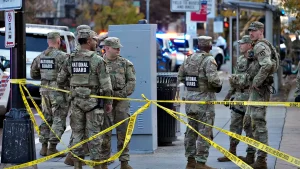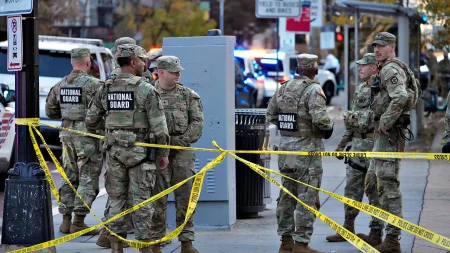Tai Po Relief Efforts: Hong Kong Community Rallies Behind Flood Victims
Citywide Solidarity Emerges as Residents Mobilize Aid for Displaced Families
In the wake of devastating flooding that has upended countless lives in Tai Po, Hong Kong residents have demonstrated an extraordinary display of community spirit, rapidly organizing relief efforts to support those displaced by the disaster. What began as small individual contributions has swiftly evolved into a coordinated humanitarian response that showcases the resilience and compassion embedded in the city’s social fabric.
The outpouring of support comes at a critical time for Tai Po residents, many of whom were forced to evacuate with little more than the clothes on their backs as floodwaters rose with alarming speed. Local authorities estimate that hundreds of families have been displaced, creating an urgent need for essential supplies and temporary shelter. The community’s swift response represents a powerful testament to Hong Kong’s collective strength during crisis situations, with volunteers from diverse backgrounds uniting under a shared purpose.
Grassroots Aid Network Emerges Overnight
Within hours of the flooding, social media platforms became vital coordination hubs as concerned citizens established collection points across the territory. Wong Mei-ling, a 42-year-old office manager from Kowloon Tong, described how she learned of the relief efforts through a WhatsApp group message. “I immediately gathered whatever unused clothing and canned goods we had at home,” Wong explained. “By the time I arrived at the collection point in Mong Kok, dozens of people were already there, sorting donations into categories. It was truly moving to witness.”
The spontaneous organization has been remarkably efficient, with volunteers creating sophisticated systems to inventory and distribute donations. Makeshift distribution centers have emerged in community halls, schools, and religious buildings throughout Tai Po district. These centers operate with precision that belies their impromptu nature, with volunteers working in shifts to ensure continuous support for affected residents. Many volunteers have taken time off work, demonstrating the priority placed on community welfare during this challenging period.
Local businesses have also played a crucial role, with restaurants preparing hot meals and logistics companies offering free transportation services to move supplies to where they’re most needed. This multi-faceted approach has created a comprehensive support network that addresses immediate survival needs while also providing comfort and dignity to those displaced by the floods.
Essential Supplies Flow as Community Responds to Specific Needs
The range of donations reflects both the immediate necessities and the thoughtful consideration of donors. Beyond the expected contributions of bottled water, non-perishable foods, and clothing, residents have shown remarkable foresight in providing items often overlooked during disaster relief efforts. Personal hygiene products, baby supplies, medication, portable phone chargers, and even books and toys for children have been collected in substantial quantities.
“We’re seeing donations that address both physical and emotional needs,” noted David Chan, a volunteer coordinator at Tai Po Community Center. “People aren’t just dropping off whatever they have at home—they’re thinking carefully about what flood victims might require, both now and in the coming weeks.” This holistic approach to disaster relief demonstrates a nuanced understanding of crisis response that extends beyond mere survival to encompass psychological wellbeing and dignity.
The efficiency of distribution has been enhanced by real-time communication between relief centers and volunteer groups on the ground. When specific shortages are identified, calls for those items spread rapidly through messaging apps and social media, typically resulting in the needed supplies arriving within hours. This dynamic responsiveness represents an evolution in community-based disaster management, leveraging technology to optimize humanitarian efforts.
Local Heroes Emerge Amid Challenging Circumstances
Among the thousands of donors and volunteers, certain individuals have distinguished themselves through extraordinary commitment to the relief effort. Sixty-five-year-old retired teacher Lee Wing-keung has become something of a local legend after converting his minivan into a mobile distribution unit that navigates through accessible areas of Tai Po, reaching families who cannot make it to the main relief centers.
“Many elderly residents and families with young children are effectively stranded in buildings where the ground floors are still partially flooded,” Lee explained. “They can’t easily leave to collect supplies, so we bring what they need directly to them.” His initiative has inspired others with vehicles to form a volunteer transportation network that ensures aid reaches all affected areas.
University students have emerged as another vital force in the relief operations. Groups from all major Hong Kong universities have organized volunteer brigades that handle everything from sorting donations to cleaning mud from homes as floodwaters recede. Their energy and technical savvy have proven invaluable, particularly in establishing online platforms that match specific needs with available resources.
“This experience has completely changed my perspective on what a community can accomplish when united by compassion,” said Jennifer Wong, a third-year student at Hong Kong University who has been volunteering daily since the flooding began. “The barriers that typically divide people—age, socioeconomic status, political views—have completely disappeared in this context.”
Coordination Improves as Government Agencies Join Community Efforts
What began as a purely grassroots movement has evolved into a more structured operation as government agencies have recognized and begun supporting community-led initiatives. The Social Welfare Department has deployed staff to major donation centers, providing logistical support and helping to identify and assist the most vulnerable affected residents. This collaboration between official channels and volunteer groups represents an effective disaster response model that capitalizes on the strengths of both approaches.
“The community mobilized faster than any official response could have,” acknowledged District Officer Raymond Cheung. “Rather than attempting to replace these organic efforts, we’re focusing on amplifying them through resource support and coordination.” This pragmatic approach has earned praise from community organizers who initially feared bureaucratic interference might slow their nimble operations.
The Hong Kong Housing Authority has also played a crucial role by expediting temporary housing arrangements for displaced families. Working in concert with community volunteers who help identify those most in need, the Authority has allocated transitional accommodations with unprecedented speed. “The synergy between government resources and community knowledge has created a more efficient system than either could achieve independently,” observed housing activist and volunteer Mary Lam.
Health professionals have likewise contributed their expertise, with doctors and nurses establishing free clinics at major relief centers to address medical issues arising from the disaster. These range from treating minor injuries sustained during evacuations to ensuring continuity of care for those with chronic conditions who lost medications in the flooding.
Long-term Recovery Begins as Immediate Crisis Response Continues
As the immediate emergency phase transitions into long-term recovery, the community’s focus has begun expanding beyond day-to-day survival needs. Volunteer lawyers have established consultation sessions to help affected residents navigate insurance claims and disaster relief applications. Financial professionals offer advice on accessing emergency funds and managing the economic impact of property damage. Teachers have organized tutoring sessions for displaced students to minimize disruption to their education.
“The response to this disaster has evolved organically to address each stage of recovery,” observed Dr. Jessica Wong, a sociologist studying community resilience at Chinese University of Hong Kong. “What we’re witnessing is a masterclass in social organization, with specialists contributing their unique skills while general volunteers handle the fundamental logistical work.”
Community leaders are now discussing how to sustain this momentum as media attention inevitably wanes and the initial surge of donations subsides. Plans include establishing a dedicated volunteer database, creating standardized protocols for future emergencies, and implementing training programs to build an even more effective community response capability.
The floods that devastated Tai Po have revealed the extraordinary capacity for compassion and organization within Hong Kong’s population. From the first hours of the crisis through the ongoing recovery efforts, residents have demonstrated that community solidarity remains one of the city’s greatest strengths. As one volunteer succinctly expressed, “In showing up for our neighbors during their darkest hours, we’ve discovered the very best of ourselves.”










